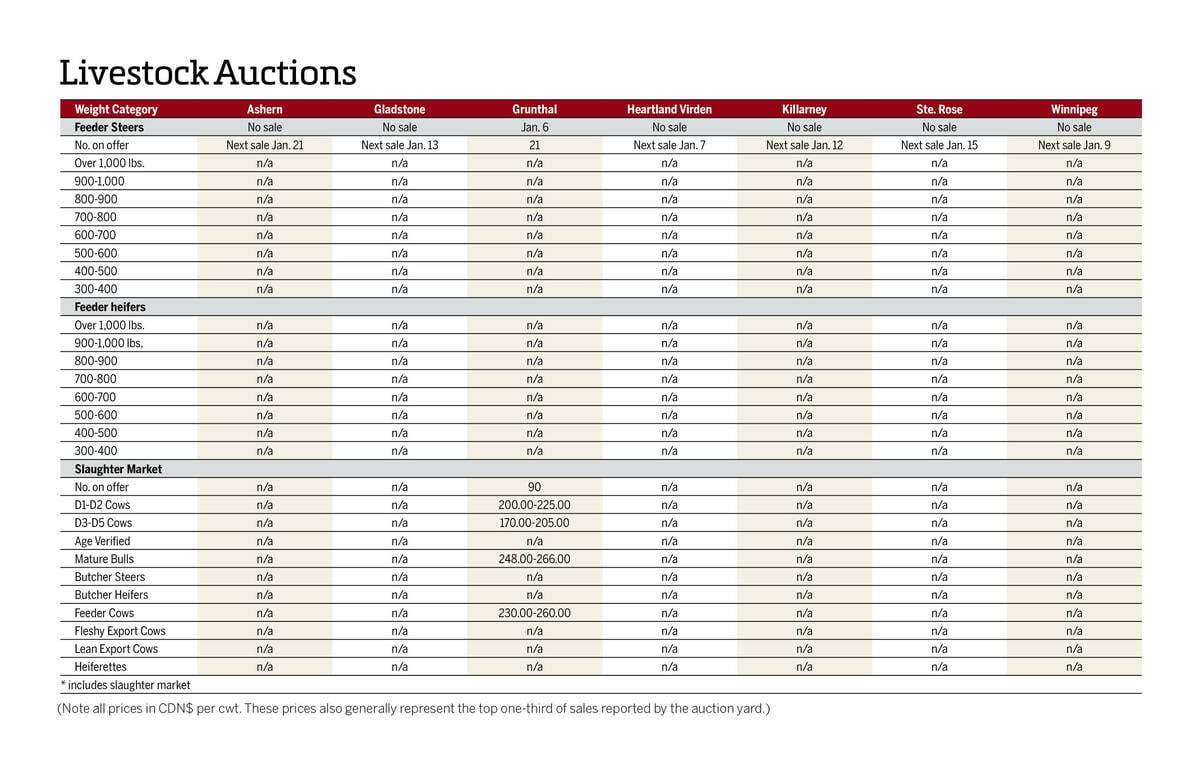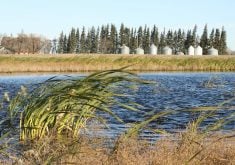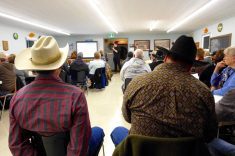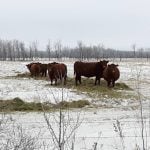Bull buying season is here and Manitoba Agriculture livestock and forage specialist Andrea Bertholet recommends that buyers take their time when selecting a bull.
“Buying a herd sire is a big decision that makes up 50 per cent of the genetic makeup of your herd,” she said.
Bertholet offered tips and guidelines for bull selection at Manitoba Agriculture’s Stock Talk webinar earlier this month, starting with a reminder about the importance of good record keeping.
Read Also

Manitoba cattle prices Jan. 6
Grunthal was the first Manitoba livestock auction mart to kick off 2026 cattle sales in early January.
“Are you able to tell which bulls sire which calves and how they perform? Being able to keep track and know exactly which calves come off which bulls can really help you make better decisions.”
Bertholet said people who simply track their head are merely guessing.
“Until it’s actually recorded and written down, it’s an assumption. In the electronic age that we’re in, there are some databases and electronic tracking apps that you can use to track the performance of your herd.”
These apps will record weaning weight and performance, and though they may be convenient, a good old-fashioned calving book can serve the same purpose. The important thing is that data is recorded.
“Go back and look and see how those calves did at birth and weaning, and then at marketing and how did they do during the background phase,” she said. “Regularly weigh your animals and track that information as well.”
What are your goals?
It may seem obvious, but setting goals is a crucial part of bull selection.
“The first step in setting goals is knowing where you are and where you want to be,” said Bertholet, which again shows the importance of good record-keeping.
“Being able to look back and assess those records can help you meet your goals faster.”
She outlined some of the questions to ask about the herd while setting goals.
“Are they all being shipped off to market, or do you keep replacement heifers? Do you want a certain herd sire? Do you want to keep daughters off a certain herd sire? Are you planning to keep those heifers or market them?”
She also said it’s important to know the status of herd bulls before sale season.
“Because bull sale season is kind of a short, quick whirlwind, having an idea of what you need and what you’re looking for ahead of your breeding season will help,” she said. “It’s also important to have herd bull semen tested early to determine if there are any major issues.”
What can you afford?
The Beef Cattle Research Council has a bull valuation calculator, which can be a useful resource when determining what potential buyers can afford to pay for a herd bull.
“Buying a bull is a big investment, both financially and genetically,” said Bertholet. “Take a look at that calculator and play around with it; it’s a tool that can help you determine where your budget might be.”
The results might be surprising.
“You might actually be able to spend a little more on a bull than you think you might, once you go through and do this evaluation.”
Heritability
When determining which traits to add to the herd, remember that heritability varies greatly among different traits.
“Reproductive traits like fertility, longevity and maternal ability — those are relatively low heritabilities,” said Bertholet.
High heritabilities include carcass traits like marbling ability, ribeye area and overall size. Bull selection will have a big impact on these things.
“If you’re thinking your calves are getting too small for what the market is, buying a bigger frame bull is something that is fairly highly heritable.”
Milk production, feed efficiency, growth — weight, weaning, weight, average daily gain — are all moderately heritable traits.
Conformation
Conformation of the bull is an important factor.
“Structural soundness leads to longevity,” said Bertholet. “If you’re investing $6,000 or $7,000 in a bull, you want to make sure you get five to eight years of use out of him.
“Structural soundness means feet and legs that have the proper angle of their hoof, the hoof itself; you want that nice kind of square toe, that nice square hoof and the correct set to their legs.
“From behind, you want to make sure that they’re nice and fairly straight and keep those back legs right underneath them.”
Bertholet noted that animals often stand in a bed of straw at bull sales, which can obscure some important details.
“Make that effort to get those bulls out in the alley. Take a good, close look at how they move up and down the alley. That back foot should step right into the front foot track.”
Phenotype versus genotype
At the most basic, a phenotype is a characteristic that the animal physically displays and a genotype is the genetic makeup of that animal.
So, the colour of a bull is a phenotype, but a black bull bred with a black cow wouldn’t necessarily produce a black calf because of the underlying genotype.
A black bull could be homozygous (both the genes that determine coat colour are black) or heterozygous (only one gene is black and the other is another colour—red for the following example).
A homozygous black sire and homozygous black dam will produce black progeny. A homozygous black bull will produce black calves no matter whether it is bred to red or black cows.
If that bull is mated with a heterozygous black cow, all calves will be black but some will be red carriers. If those red carriers were bred to a heterozygous bull, red calves could result.
In the case of a heterozygous black bull (a red carrier) mated with a heterozygous dam, 25 per cent of the offspring will be homozygous black; 50 per cent will be heterozygous black (red carriers), and 25 per cent will be red.
If a heterozygous black bull is mated with a red cow, 50 per cent of the progeny will be heterozygous black and 50 per cent will be red.
“So, if having consistently black calves is important to you, then a homozygous black bull would be the sure bet for you,” said Bertholet.
Expected progeny differences
EPDs predict the expected performance of that animal and are based on the individual performance of relatives and the progeny of a bull. They allow comparison of animals within a breed but not across breeds.
Bertholet used the example of weaning weight.
“If bull A has a plus 30 and bull B has a plus 10, when comparing those two, the difference between them is 20 pounds. So the potential progeny from bull A will have an approximately 20-pound heavier weaning weight than the progeny from bull B.”
Because the progeny of a bull adds to data and confirms certain breeding trends, a bull that has sired a lot of progeny will have more accurate genetic information.
“The more progeny registered off them, the more accurate those EPD could be, and the more weight you can put on using them as a tool,” said Bertholet.
Correspondingly, the accuracy rates for yearling bulls are relatively low.
“I wouldn’t suggest buying a bull based solely on EPDs.”
Bertholet also had general pointers to avoid buyer’s regret.
“Take a look at the cows that those bulls come from. Going back and seeing where those bulls come from and what kind of cow family they come from says a lot about the potential for that to work.”
It’s also important to understand how a breeder stands behind their bulls.
“Find out if they are going to support you and what kind of warranty and insurance they have.”
But the biggest takeaway is to take time.
“Try not to select the bull as they come through the ring without doing your homework. You’ll be most happy with your decision if you do your homework and take a closer look ahead of time.”
















